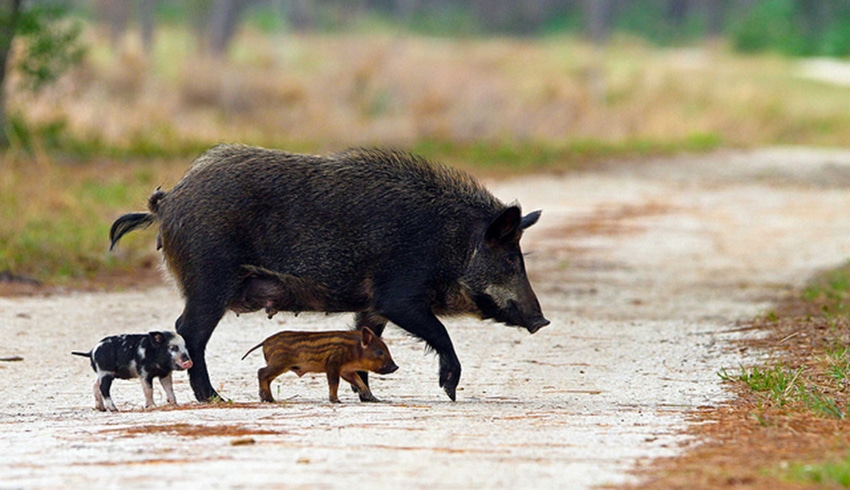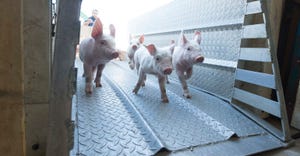Potential hosts for Japanese encephalitis virus in North America
As vectors, feral swine are competent for over 45 diseases, parasites; a concern for any foreign animal disease including JEV, as demonstrated in Australia.
November 25, 2022

A recent symposium held at the Center for the Ecology of Infectious Disease at the University of Georgia, sponsored in part by the Swine Health Information Center, addressed issues surrounding a 2022 outbreak of Japanese encephalitis in Australia affecting humans and animals. Reacting to the JE occurrence, SHIC along with the U.S. pork industry began monitoring Australia's situation and response to the outbreak. SHIC immediately began encouraging prevention and preparedness activities as pigs are JEV amplifying hosts.
One major objective of the symposium was to further JEV prevention, preparation and control for the United States. As such, identifying animals other than domestic pigs that can serve as JEV hosts in North America was a major topic of discussion.
Feral pigs
Charles Taylor with the University of Georgia Savannah River Ecology Lab and Warnell School of Forestry and Natural Resources presented information on history, management, and current research on feral pigs in the United States. As vectors, feral swine are competent for over 45 diseases and parasites, a significant concern for any foreign animal disease including JEV, as demonstrated in Australia.
Feral swine are one of most destructive invasive vertebrates in North America, per Taylor, costing $1.5 billion in damage in the United States annually affecting agriculture, forestry and property. Regional management efforts began in the 1990s with a shift in perception and management of feral pigs, Taylor remarked, but did not become aggressively managed on a national scale until the mid 2010s. The National Feral Swine Damage Management Program, launched in 2014, includes research, disease monitoring, tool development, communication/outreach and control measures. Both lethal and non-lethal management strategies are employed for control.
Today, pockets of feral swine in the United States have developed over centuries from genetics mixed with Eurasian boars. A rapid shift in population size and distribution of feral swine ramped up in the 1980s and 1990s. Canada is not immune to the spread of feral pigs with a spike there beginning in the 2000s. Taylor described this recent expansion in the United States and Canada as a "pig bomb."
Wild pigs have been reported in 48 states over time, Rhode Island and Wyoming being the exceptions, with a presence in 35 states now. Current estimates are 7 to 8 million animals are in the United States. Recent eradication successes have been seen in Idaho, Maryland, New Jersey and New York. States nearing or reaching eradication include Iowa, Maine, Minnesota, Wisconsin, Washington and Colorado. However, entrenched and widespread populations exist in the South and in California.
Numerous management challenges exist for the most abundant and widespread large invasive vertebrate in United States. There are few effective predators for feral swine which have the highest reproductive potential of mammals of their size. They can have up to three litters in 14 months with litter sizes ranging from six to 10 and can begin reproducing as young as six months of age.
Taylor said research is needed to advance ecological knowledge and effective management of feral swine. New tools for control are needed as well as best management practices. He and his colleagues continue to study, review and apply learnings related to wild pig movement and behavior for improved management recommendations. Ongoing projects include the Blackbeard Island elimination project, evaluating different models of estimating abundance, investigating effectiveness of trap types and exploring diet and changes with seasonality.
Swine pathogen horizon scan
Anna Willoughby, a UGA student working with CEID presented a swine pathogen horizon scan during the JEV Symposium. Her research centered on four questions: Which bacteria should be of concern to the swine industry? What bacteria species will likely infect swine? What wildlife hosts will likely host these bacteria? If a bacteria species is likely to infect, will it have an impact?
In presenting her on-going bacterial spill-over research in mammals, Willoughby said the same approach could be implemented for JEV. It will require revisiting literature to build databases and modeling approaches for all kinds of systems. Success requires knowing details on the life history of the pathogen being examined. Willoughby commented work might be able to pull information from previous West Nile virus outbreaks to apply to JEV work.
Willoughby said 1,600 different bacterial species are hosted by mammals and her work focused on 353 North American bacteria species, creating a dataset for development of a spill-over predictive model. Yet there are 176 wild mammals with no bacteria information and 60% of known bacteria species are detected in only one host species. The vast majority of mammals are associated with fewer than five bacteria species.
Willoughby said there are 22 mammals in North America with a high propensity for 10 or more bacteria species and the relating 102 bacteria species are not a lab-feasible research priority. She is partnering with SHIC to narrow down the bacteria list relevant to swine via survey of stakeholders. Participation in the first survey round was low so will be repeated for better data.
SHIC, launched by the National Pork Board in 2015 solely with Pork Checkoff funding, continues to focus efforts on prevention, preparedness and response to novel and emerging swine disease for the benefit of U.S. swine health. SHIC is funded by America's pork producers to fulfill its mission to protect and enhance the health of the U.S. swine herd.
Source: Swine Health Information Center, which is solely responsible for the information provided, and wholly owns the information. Informa Business Media and all its subsidiaries are not responsible for any of the content contained in this information asset.
You May Also Like



